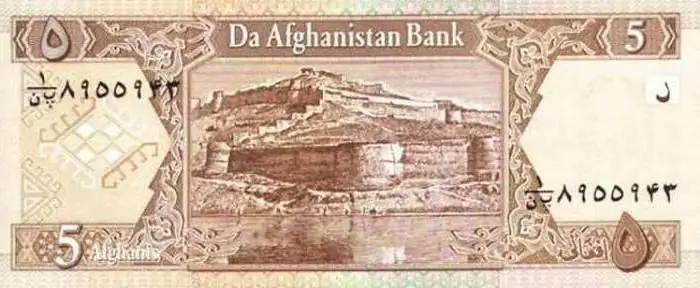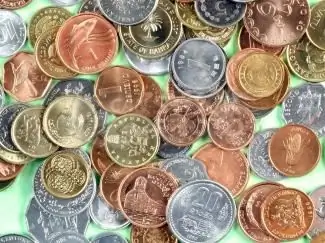2026 Author: Howard Calhoun | [email protected]. Last modified: 2025-01-24 13:10:41
Recently, the bolivar, the currency of Venezuela, had the prefix "fuerte", which means strong. This name implied the stability of the monetary unit, and was justified for a century. Now the Venezuelan currency is among the leaders in the rate of devaluation.
The origin of the modern Venezuelan currency (bolívar)
The currency that preceded the bolivars, the venezolano, was superseded by new signs in 1879. The name was given in honor of the leader of the movement for the country's freedom from Spain - Simon Bolivar, who became the main hero of Venezuela.
The first bolivars were introduced back in March 1871, but for the next eight years the two currencies coexisted as full-fledged banknotes. Initially, the ratio of bolivar to venezolano was 1 to 20, in the spring of 1879 a single (bolívar) currency remained. The exchange rate for new banknotes was already 1 to 5 (5 bolivars were given for each venezolano).

Peg Venezuelan currency to other units
At the time the bolivar appeared, it was tied to"silver standard" monetary union of Latin America. This meant that the monetary unit was equal to 4.5 g of silver or 0.29 g of gold. In addition to the bimetallic standard, protection against inflation was provided by a formula according to which the issuance of new banknotes depended on the population of the country.
Over time, paper bills gained popularity, nullifying the peg to silver. In 1887, it was decided to fix the bolivar in relation to gold. A new anchor appeared in 1934, after the final displacement of all financial competitors by the United States of America. At that time, most countries established a peg to the US dollar, and the Venezuelan (bolívar) currency was no exception. The exchange rate against the dollar was 3.91 to 1, in 1937 it was changed to 3.18 to 1 and remained at this level until 1983. All this time, the monetary unit of Venezuela was considered one of the most stable not only in Latin America, but throughout the world.
It is also worth noting that the Venezuelan economy is significantly dependent on world oil prices, since the country is one of the largest suppliers of raw materials.
From stability to decline
February 18, 1983 became known in Venezuela as Black Friday. It was then that the collapse of the bolivar occurred, displacing it from the leading position in terms of stability. The devaluation continued, banknotes accumulated zeros, depreciating the bolivar more and more.
The currency reached the exchange point of 2,150 bolívares per dollar in the early spring of 2005. Two years later, a decision was made on the denomination, and already from the first day of 2008, the residents changed the remaining ones forhands with money for new signs in the ratio of 1000 to 1.

Strong currency for a strong country
This is approximately how the slogans of the 2008 reform sounded, when they tried to save the economy by introducing a new “strong” bolivar. At the same time, a new designation was adopted in the international list of currencies: VEF (short for “Venezuelan strong bolivar”). The currency was issued in the form of banknotes and coins: in 1 bolivar 100 centimos. Some suggest that the new name has a connection with the peso fuerte, coins that were in use in ancient times.
After updating the currency, it again gained stability in relation to the monetary units of other countries. True, most of the stability is only visible, since the official and "black" bolivar rates differ significantly. For example, at the beginning of 2008, the official rate was 2.15 bolivars for 1 dollar, and on the black market it was changed at 5.2 to 1. punishable.

Venezuelan strong (fuerte bolívar) currency: exchange rate against the ruble, dollar and euro
The last significant fall in the exchange rate occurred in mid-February 2016, when a 59% devaluation was carried out by decree of President Nicolas Maduro. After it, the official exchange rate of the bolivar against the dollar changed from 6.3 to 10.
The data below is current as of the end of April 2016.
1 USD=9.95 VEF (1 Venezuelan bolivar is given for 0.10 USdollars).
1 EUR=11.17 VEF
1 GBP=14.36 VEF
1 RUB=0.15 VEF (1 Venezuelan bolivar is given for 6.72 rubles).
1 UAH=0.39 VEF (1 Venezuelan bolivar is given for 2.55 hryvnia).

Although the currency is called "strong bolivar", after the withdrawal of previous bills, the prefix "fuerte" is becoming less and less common. In colloquial speech, locals almost always use the short name - bolivar.
Original currency: denomination and external features
Bolivar stands out from the usual dollars and euros. First of all, the design of banknotes is striking, the front side of which is made vertically, and the reverse side is horizontal. The front of the banknotes is decorated with politicians of Venezuela, and the birds and animals that inhabit the country are depicted on the back.
Banknotes are issued in denominations of 2, 5, 10, 20, 50 and 100 bolívars, as well as coins in denominations of 1 bolívar and 1, 5, 10, 12 ½, 25 and 50 centimos. 12 ½ centimos can also be called a feature of the Venezuelan currency. On one side of the centimo, the denomination, eight stars and the name of the currency are depicted, and on the second, the coat of arms and the date of issue are minted. The 1 bolivar is slightly different: the coat of arms is placed on one side with the denomination, stars and year of issue, and on the reverse side, a portrait of Simon Bolivar is symbolically depicted.

Where to change money, what currency to take to Venezuela
ConsideringSince the bolivar exchange rate is still pegged to the US dollar, it is best to take American currency on a trip. Recall that there are two rates in the country: at official points where currency exchange is allowed, the bolivar will be sold at the appropriate rate set by the central bank of Venezuela by government decree. This is true for banks, exchange offices, hotels, shops, travel and transport agencies.
Exchanging money from hands at the black market rate threatens with many troubles, as it is forbidden, and there are many crooks among the money changers. A good alternative is to pay in dollars in the markets and in some private establishments. Taxi drivers and guides are quite willing to change dollars, offering a rate one and a half to two times higher than a bank one.

Bank cards are doubly unprofitable: firstly, when paying with them or withdrawing cash, the national bank rate is applied, and secondly, they will also charge a commission of up to 10% of the amount used.
Recommended:
The currency of Finland. History, appearance, currency exchange rate

In this article, the reader will get acquainted with the currency of Finland, its history, appearance, and some other characteristics. In addition, you will find out where you can exchange money in Finland
Austrian currency: history, features, exchange rate and interesting facts

The article is devoted to the Austrian national currency and contains a brief history, description and exchange rate
Australian currency. AUD is the currency of which country other than Australia? History and appearance

The Australian dollar is the official currency of the member states of the Commonwe alth of Australia. AUD is the currency of which country or countries? In addition to Australia, these include the Cocos Islands, the Norfolk Islands and the Christmas Islands
The currency of Afghanistan: the history of the currency. Curious information about the currency

Afghan currency Afghani has almost a century of history, which will be discussed in this material
What is a currency? Russian currency. Dollar currency

What is the state currency? What does currency turnover mean? What needs to be done to make the Russian currency freely convertible? What currencies are classified as world currencies? Why do I need a currency converter and where can I find it? We answer these and other questions in the article

